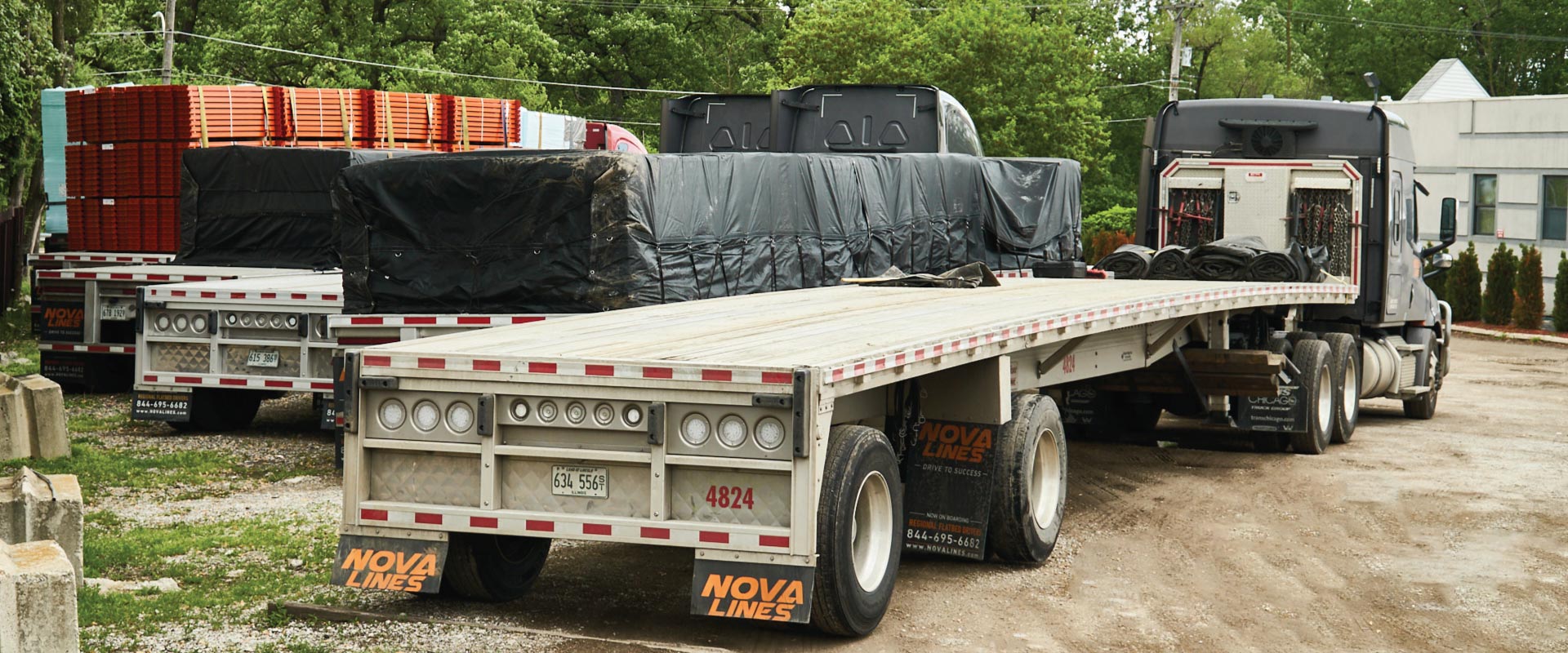Some believe that the best way to learn truck driving is purely through apprenticeship. The old-timers of
the trucking industries are some of the best drivers, and they learned their skills solely by driving
alongside other truckers. This hands-on experience is critical if you want to master the machine in the
best way possible. Nowadays, the methods of learning trucking skills are different because of the
introduction of trucking schools.
CDL Schools and Their Promise
Veterans in the trucking industries argue that you cannot learn how to back up a tractor-trailer by sitting
behind a desk and reading a book. In other words, spending more time in the classroom and less time
gaining practical experience is not ideal if one wants to excel at trucking.
One of the most difficult things that you face as a truck driver is when you are backing a tractor-trailer.
Learning this trait is less of a job for CDL schools and more impactful when it is coming from an
instructor riding alongside you while you attempt to back the truck.
However, you still need to keep in mind some pointers before you attempt to back the truck in between
two trailers for the first time. For example, each type of truck that you ride comes with its ideal methods
of backing up. You have to be aware of the angles, blind spots, and the size of the truck every time you
want to park it safely.
CDL schools provide you some of the cautionary points to keep in mind when driving a tractor-trailer.
Thus, they are an essential part of acquiring a trucking license. Furthermore, they also help a trucker
become aware of the multiple steps when backing a truck. In retrospect, the best ways to perfect this
maneuver comes from the combination of theoretical facts and practical experience.
The Causes of Trucking Incidents
The surprising numbers of truckers who are still not comfortable or confident backing into a tight spot
usually lack one of the two aspects of the skill. Some do not keep predictable implications in mind, while
others do not have the relevant experience.
For this reason, most trucking incidents occur in the event of backing up a truck. Many rig owners focus
more on driving straight ahead and do not give importance to the crucial part of backing it up. Not
knowing how to park effectively, quickly, and perfectly can cost a trucking company in either damage,
fuel, and most importantly, time.
Many times, truckers try to back the truck haphazardly and do not have enough patience when
attempting to back up, and this is the main reason for incidents. The backing up procedure requires
systematic steps that you have to follow. These steps are vital because the trucker faces blind spots
when backing up a rig.
Blind spots refer to the locations that are not visible to the truckers when they are backing up. With
limited visibility, truckers need to use the help of mirrors and intuition to make a sound judgment and
slowly back their truck safely. Despite the use of instincts, backing up a tractor-trailer is not only a
display of spatial awareness but also memory. This is because the truck driver must remember essential
details before they can back their truck into safety. Below are some of the key tips on backing up
tractor-trailer techniques.
45 Degree VS 90 Degree Truck Backing
45 degrees parking technique is applicable mostly in truck parking lots, and you can therefore use it to
park in between trucks. When opting for the 45 degrees parking technique, make sure that there is
plenty of space on the passenger side. This is because when you place your truck perpendicularly
adjacent to space and back it up, this leaves little space on the passenger side.
In order to back the truck into the parking space at a 45-degree angle, your decisions and moves have to
be precise and technical. You may also have to make a few adjustments back and forth before you park
it. On the other hand, 90 degrees technique does not require the same amount of adjustment. Truckers
can back it up at 90 degrees angle since it is only possible when the truck is small, or there is plenty of
space on the passenger side.
Therefore, before you decide on which technique, you must consider the length of your truck, the space
on the passenger side, and the space between the two trucks. If you face a situation where the space
between the two trucks is tight, but you have plenty of passenger side space, then it is best to opt for
the 90 degrees technique.
Alternatively, if you have a limited amount of space on the passenger side, but the space in which you
have to park the truck allows you to make the adjustments, then the 45 degrees technique is preferable.
However, you must adhere to some rules before you attempt the 45 degrees backing.
Read Also: How Much Does it Cost to Get a CDL
Take as Much as Time You Need
Backing up without clear vision can be frustrating and scary. Since backing up requires you to make
intuitive adjustments, do not be afraid to step out of the truck whenever you are unsure about the
angle. Stepping out now and then between, backing the truck allows you to take a mental picture of the
space, which ultimately limits your chances of bumps and scratches.
The positioning of your rig and angles of the passenger and rear side are never visible when backing a
truck, even with the help of mirrors. This is why it makes sense to avoid blind-siding yourself completely
and keep having a good look to reduce the chances of accidents.
Move the Truck Slow and Steady
When backing up a truck, you will not benefit from pumping the gas too much. Instead, you have to
move the truck very slow. If you are a beginner trucker, make sure that you are backing up the truck
slow and keep getting out of the truck to make a better analysis of its position.
Backing it up slowly with pauses helps you identify your next moves and make a better prediction of
what you have to do to park it safely for docking. Moreover, the more slowly you back your truck, the
fewer chances of major damage. In the worst-case scenario, the impact or clash of your truck will be
minuscule if you are backing it up at a much slower pace.
Scan and Plan
Backing up into a docking spot is all about planning and executing. If you do not take into account the
parking area, its conditions, and possible complications while backing up, then you are not a good
trucker.
Veteran truckers know how to back up a tractor-trailer because they are excellent at anticipating the
area. First, make sure that the docking station is safe and free of any hazardous material that will
damage the truck. Remove all pointy and sharp objects from the ground to ensure the safety of your
wheels.

Secondly, be careful of the parking stripes that you have to park between. Make sure that they are
perfect in alignment and visible. If you cannot see the stripes, you will find it entirely difficult to back up
the tractor-trailer into place.
The best way to deal with worn-out separator stripes is to put your marker as a piece of identification of
the stripes. Any object that points to the location of the stripe, such as a bag or a piece of cloth, will
work. You can take these steps in preparation for backing up a tractor-trailer to prevent any risk of
accidents.
Also, be aware of other trucks and check whether their wheels are touching the docking lines. This is
important because it helps you decide whether you will center your truck between the lines or move the
wheel closer to the lines.
Read Also: Automatic Semi Truck Transmissions vs. Manual Truck Transmissions
Avoid Spotters
Spotters are not helpful unless they are veteran truckers. Having a spotter may sound like extra help,
but when it comes to backing a truck, it can also be the reason for an accident. If your spotter is even a
slightly bit inexperienced and lacks instructional skills, then they may guide you to disaster.
You should not rely on other people for instructions since it can be a distraction than a help. Unless your
spotter does not have an aerial view of the truck and plenty of trucking experience, you are better
without them.
Therefore, try to use your observational skills and driving prowess to strategize a safe and successful
dock parking. Experienced and trained spotters are hard to come by and not available all the time. So, it
is also better not to be depending on outside help as a trucker. Learn to back up without help and in any
circumstances.
To Conclude
Backing a tractor-trailer is one of the hardest things that a trucker has to master when driving the truck.
It requires precision, skill, accuracy, and patience. It is also the riskiest thing that truckers voluntarily
perform. Repetition is the only way to master a tractor-trailer backing.
